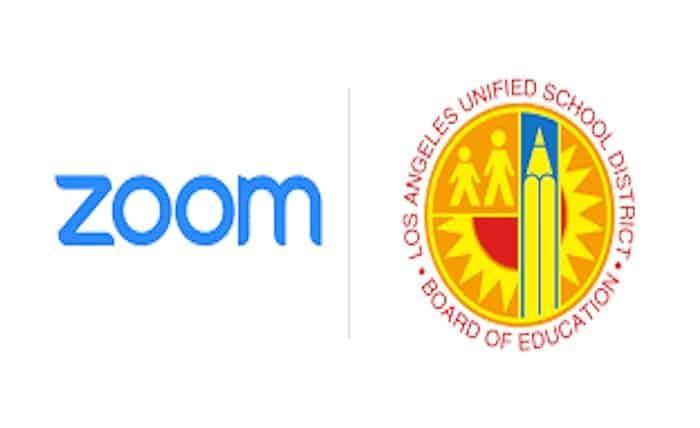A Complete Guide to LAUSD Zoom: Enhancing Virtual Learning in Los Angeles Unified School District

In recent years, the Los Angeles Unified School District (LAUSD) has made significant strides in adapting to the digital age, particularly with the use of online platforms like Zoom. As remote learning becomes more prevalent, the importance of a reliable and user-friendly platform like LAUSD Zoom cannot be overstated. This guide will explore the various features of LAUSD Zoom, its role in facilitating education, its benefits to students and teachers, and the challenges associated with its use.
The COVID-19 pandemic forced many educational institutions to transition to online learning, and LAUSD was no exception. With thousands of students and educators needing a solution to continue learning remotely, Zoom emerged as a lifeline. As we delve deeper into this topic, you’ll discover how LAUSD Zoom is transforming the educational experience in Los Angeles and beyond.
How LAUSD Zoom Facilitates Virtual Learning
LAUSD Zoom has become the cornerstone of the district’s remote learning strategy. For teachers and students alike, Zoom offers a platform where they can engage, collaborate, and learn despite being physically separated. Through its video conferencing features, teachers can conduct lessons, hold virtual office hours, and provide real-time feedback to students.
Zoom’s screen-sharing functionality allows teachers to present materials, share lessons, and interact with students in ways that mimic a traditional classroom experience. Additionally, with breakout rooms, students can collaborate in smaller groups, enhancing their learning experience and promoting interaction. This setup also allows students to ask questions in real-time, which is crucial for maintaining engagement and understanding during online lessons.
Moreover, LAUSD Zoom integrates with other educational tools used by the district, such as Google Classroom and Microsoft Teams. This integration allows for seamless collaboration and makes it easier for both teachers and students to access materials, assignments, and resources without leaving the platform.
Key Features of LAUSD Zoom
Zoom offers several key features that make it an ideal platform for educational purposes, and LAUSD Zoom takes full advantage of these tools to enhance virtual learning. Here are some of the most important features:
- Video Conferencing: The core feature of LAUSD Zoom is its video conferencing capabilities. Teachers and students can see and hear each other in real-time, creating an interactive and engaging learning environment.
- Screen Sharing: Teachers can share their screen with students, allowing them to present slides, videos, and other educational content. This feature is essential for delivering lessons and explaining complex concepts.
- Breakout Rooms: One of the most powerful features of Zoom for educational purposes is the breakout room. Teachers can divide students into smaller groups to work on assignments or collaborate on projects. This fosters teamwork and allows for more personalized attention during class discussions.
- Chat Functionality: The chat function enables students to ask questions privately or interact with the entire class during lessons. Teachers can also use this feature to provide additional instructions or share links and resources.
- Recording: LAUSD Zoom allows teachers to record lessons, which can be shared with students who were unable to attend the live session. This is particularly helpful for students who need to review the lesson or who are working at their own pace.
- Virtual Backgrounds: A fun and creative feature, virtual backgrounds allow students and teachers to personalize their video feeds. This can be a great way to make virtual learning more engaging for younger students.
- Security Features: Given the importance of student privacy and safety, LAUSD Zoom includes robust security features such as waiting rooms, password protection, and screen sharing restrictions to prevent unauthorized participants from joining meetings.
Benefits of Using LAUSD Zoom for Teachers and Students
The transition to online learning has been challenging for many districts, but LAUSD Zoom has made the process smoother for both teachers and students. Here are some of the major benefits of using this platform:
For Teachers:
- Flexible Teaching: Teachers can adapt lessons to meet the needs of all students. Whether it’s through live lectures, recorded lessons, or one-on-one tutoring sessions, Zoom gives educators the flexibility to provide instruction in various formats.
- Engagement Tools: Zoom’s interactive tools, like polls and reactions, enable teachers to keep students engaged during class. This is especially important in a virtual environment where distractions can be prevalent.
- Accessibility: Teachers can easily reach out to students who may need additional support. Whether it’s through private messages or virtual office hours, teachers can offer personalized help to struggling students.
- Professional Development: Through Zoom, teachers can participate in virtual workshops and professional development sessions, allowing them to continually improve their teaching skills.
For Students:
- Access to Learning: LAUSD Zoom ensures that students have access to their lessons from anywhere. This is particularly important for students who may be unable to attend in-person classes due to health or logistical reasons.
- Collaborative Learning: With breakout rooms and the chat function, students can collaborate with their peers on projects, share ideas, and engage in meaningful discussions.
- Recorded Lessons: For students who miss a class or want to review material, recorded lessons provide an invaluable resource that can be revisited at any time.
- Increased Interaction: Zoom’s real-time features, such as video and chat, allow students to interact with teachers and classmates in ways that traditional online platforms cannot.
Troubleshooting Common Issues with LAUSD Zoom
While LAUSD Zoom is an excellent tool for remote learning, like any online platform, it is not without its challenges. Here are some of the most common issues that users might encounter and tips for troubleshooting them:
- Audio/Video Problems: Sometimes, users experience issues with their audio or video, which can disrupt the flow of the lesson. If this happens, make sure that the microphone and camera are properly connected and selected within Zoom’s settings. If the issue persists, try restarting the device or reinstalling the Zoom app.
- Connectivity Issues: Slow or unstable internet connections can cause video lag or dropped connections during Zoom sessions. To mitigate this, ensure that you have a stable internet connection, and try reducing the number of devices connected to your network. If possible, use a wired connection instead of Wi-Fi for more stable performance.
- Zoom Crashing: If Zoom suddenly crashes or freezes, make sure that your device is running the latest version of the app. Sometimes, clearing the app’s cache or restarting the device can resolve this issue.
- Classroom Security: With virtual learning, it’s important to ensure that only authorized individuals are participating in the class. If you encounter issues with unauthorized users entering a session, consider using Zoom’s waiting room feature or requiring a password to join the meeting.
- Software Updates: Sometimes, older versions of Zoom may cause issues. Be sure to regularly check for software updates, as Zoom frequently releases updates that fix bugs and introduce new features.
Enhancing Student Engagement with LAUSD Zoom
One of the biggest challenges of virtual learning is keeping students engaged and focused during online classes. Thankfully, LAUSD Zoom offers several features that can help educators make their virtual classrooms more interactive and engaging:
- Polls and Quizzes: Teachers can use polls to gather feedback or quiz students on the lesson material. This keeps students actively engaged and helps the teacher assess understanding in real-time.
- Breakout Sessions: Dividing students into smaller groups for collaborative work or discussions can help maintain engagement. Teachers can move between breakout rooms to offer guidance and monitor progress.
- Interactive Whiteboards: Zoom offers a whiteboard feature that allows teachers to draw or write notes during a lesson. This can help visualize complex ideas and encourage students to actively participate.
- Gamification: Some teachers incorporate games or challenges into their Zoom lessons, making learning more fun and motivating students to stay focused.
By using these tools effectively, teachers can create a more dynamic and engaging virtual learning environment that keeps students interested and involved in the lesson.
Conclusion
As remote learning continues to be a central part of the education system, LAUSD Zoom is proving to be an invaluable tool for students and educators alike. Its rich set of features, flexibility, and ease of use make it an ideal platform for facilitating virtual learning in the Los Angeles Unified School District.
While challenges such as technical issues or student engagement may arise, the benefits of using LAUSD Zoom far outweigh the drawbacks. With continued improvements and adaptations, LAUSD Zoom will likely remain a key component of online education for years to come, shaping the future of learning in Los Angeles and beyond.
FAQs
1. How do I join an LAUSD Zoom class?
To join an LAUSD Zoom class, you will need a meeting link or ID provided by your teacher. You can access this link via email, Google Classroom, or your school’s communication platform.
2. Can I use Zoom on a mobile device for LAUSD classes?
Yes, Zoom is compatible with both iOS and Android devices. Simply download the Zoom app from the App Store or Google Play, and use the meeting link to join your class.
3. What should I do if my Zoom session is lagging or freezing?
If your Zoom session is lagging, ensure you have a stable internet connection. You can also try closing other applications or devices that are using bandwidth.
4. Are Zoom classes recorded for later viewing?
Yes, teachers can record their Zoom sessions. These recordings are typically shared with students through Google Classroom or another platform.
5. How can I make my Zoom classroom more secure?
To increase security, use features like meeting passwords, waiting rooms, and limiting screen-sharing to hosts only. This ensures that only authorized participants can join the class.




